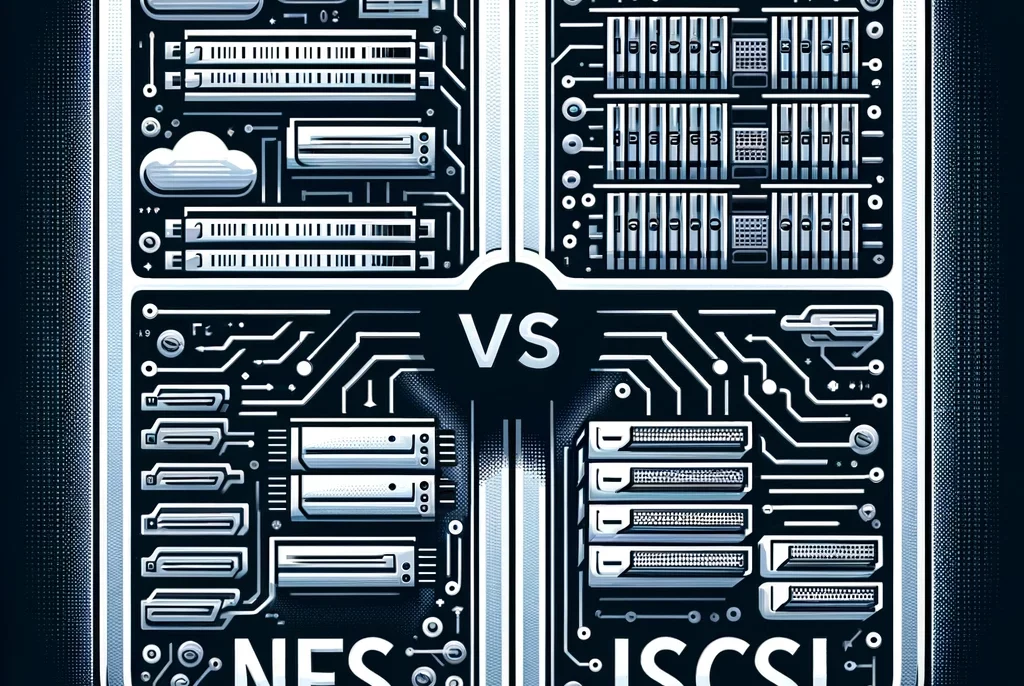In the realm of virtualization, selecting the appropriate storage protocol is crucial for achieving optimal performance and efficiency. Proxmox VE, a prominent open-source platform for virtualization, offers a variety of storage options for Virtual Machines (VMs) and containers. Among these, iSCSI and NFS stand out as popular choices. This article aims to delve into the strengths and weaknesses of both iSCSI and NFS within the context of Proxmox storage, providing insights to help IT professionals make informed decisions.
Introduction to iSCSI and NFS
iSCSI (Internet Small Computer Systems Interface) is a storage networking standard that enables the transport of block-level data over IP networks. It allows clients (initiators) to send SCSI commands to SCSI storage devices (targets) on remote servers. iSCSI is known for its block-level access, providing the illusion of a local disk to the operating system.
NFS (Network File System), on the other hand, is a distributed file system protocol allowing a user on a client computer to access files over a network in a manner similar to how local storage is accessed. NFS operates at the file level, providing shared access to files and directories.
Performance Considerations
When evaluating iSCSI and NFS for Proxmox storage, performance is a critical factor.
iSCSI offers the advantage of block-level storage, which generally translates to faster write and read speeds compared to file-level storage. This can be particularly beneficial for applications requiring high I/O performance, such as databases. However, the performance of iSCSI can be heavily dependent on network stability and configuration. Proper tuning and a dedicated network for iSCSI traffic can mitigate potential bottlenecks.
NFS might not match the raw speed of iSCSI in block-level operations, but its simplicity and efficiency in handling file operations make it a strong contender. NFS v4.1 and later versions introduce performance enhancements and features like pNFS (parallel NFS) that can significantly boost throughput and reduce latency in environments with high-demand file operations.
Scalability and Flexibility
NFS shines in terms of scalability and flexibility. Being a file-based storage, NFS allows for easier management, sharing, and scaling of files across multiple clients. Its stateless protocol simplifies recovery from network disruptions. For environments requiring seamless access to shared files or directories, NFS is often the preferred choice.
iSCSI, while scalable, may require more intricate management as the storage needs grow. Each iSCSI target appears as a separate disk, and managing multiple disks across various VMs can become challenging. However, iSCSI’s block-level access provides a high degree of flexibility in terms of partitioning, file system choices, and direct VM disk access, which can be crucial for certain enterprise applications.
Ease of Setup and Management
From an administrative perspective, the ease of setup and ongoing management is another vital consideration.
NFS is generally perceived as easier to set up and manage, especially in Linux-based environments like Proxmox. The configuration is straightforward, and mounting NFS shares on VMs can be accomplished with minimal effort. This ease of use makes NFS an attractive option for smaller deployments or scenarios where IT resources are limited.
iSCSI requires a more detailed setup process, including configuring initiators, targets, and often dealing with CHAP authentication for security. While this complexity can be a barrier to entry, it also allows for fine-grained control over storage access and security, making iSCSI a robust choice for larger, security-conscious deployments.
Security and Reliability
Security and reliability are paramount in any storage solution.
iSCSI supports robust security features like CHAP authentication and can be integrated with IPsec for encrypted data transfer, providing a secure storage solution. The block-level access of iSCSI, while efficient, means that corruption on the block level can have significant repercussions, necessitating strict backup and disaster recovery strategies.
NFS, being file-based, might have more inherent vulnerabilities, especially in open networks. However, NFSv4 introduced improved security features, including Kerberos authentication and integrity checking. File-level storage also means that corruption is usually limited to individual files, potentially reducing the impact of data integrity issues.
Conclusion
Choosing between iSCSI and NFS for Proxmox storage depends on various factors, including performance requirements, scalability needs, administrative expertise, and security considerations. iSCSI offers high performance and fine-grained control suitable for intensive applications and large deployments. NFS, with its ease of use, flexibility, and file-level operations, is ideal for environments requiring efficient file sharing and simpler management. Ultimately, the decision should be guided by the specific needs and constraints of the deployment environment, with a thorough evaluation of both protocols’ strengths and weaknesses.




